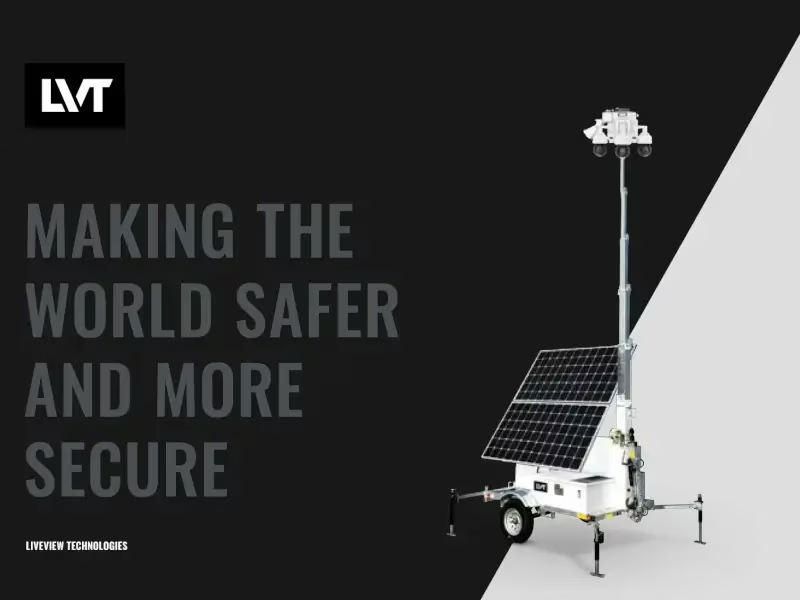Deter illegal dumping in Camden, NJ
LVT is helping Camden, NJ prevent illegal dumping, a problem that has previously cost the city millions.



Cleaning Up an Illegal Dumping Crisis: How LiveView Technologies Is Helping the City of Camden, NJ Save Millions in Waste Collection Costs
The Challenge: Amidst efforts to redevelop and reinvest in their neighborhoods, Camden city officials needed a cost-effective way to prevent illegal dumping
The Results: Not only has the city experienced no major illegal dumping in the sites using LiveView Technologies (LVT) cameras, the installations are building morale among residents and catalyzing increased participation in redevelopment efforts.
Construction rubble. Hot water tanks. Hazardous waste.
In an average year, the city of Camden, NJ cleans up about 43,000 tons of trash dumped illegally across the municipality. Not only does the deluge of debris detract from the value and pride of the city, it’s also a health and safety hazard. And it’s expensive— Camden spends about $4.5 million a year cleaning up illegal dumping, not including the cost of salaries, vehicles and other equipment that supports clean-up efforts.
In the past year, the issue has drawn increased attention from local activists and residents, as well as state law enforcement and environmental agencies. Within the city of Camden, officials from the mayor’s office, public works and other departments are equally committed to solving the long-standing problem.
“We’ll see everything from home renovation debris to discarded furniture to 55-gallon drums of hazardous chemicals,” said Keith Walker, director of the city’s Department of Public Works. “It’s a visible eyesore, but it also attracts unwanted wildlife, like raccoons, possums and rats, and encourages illicit behavior.”
.avif)
Solar-powered hardware, user-friendly software
Walker said he and his team were exploring different mechanisms for preventing illegal dumping, when GovDesigns, the company that runs the city’s website, offered an unexpected recommendation.
“I was actually on vacation in Nashville, at a Kroger’s grocery store, when I noticed a LiveView Technologies trailer in the parking lot,” said Mike Irwin, owner of GovDesigns. “I wanted to figure out what this installation was that was running off of solar power, so I got in touch with LiveView Technologies. In addition to the software and hardware, what really impressed me was its usability.”
In short order, Irwin reached out to his clients, including Walker and others in the Camden mayor’s office and office of emergency management. Within a matter of days, LVT flew to Camden to demo the technology and quickly set up cameras at two local hot spots for illegal dumping.
‘100% working’ as a deterrent
The two locations, which were selected from a list of 54 sites the city had prioritized for cleanup, filled multiple tractor trailers with illegal trash in a given year. Walker estimated that one location was responsible for 20 to 25 tons of illegal dumping, while the other saw 50 to 75 tons of illegal dumping in one year.
But in the four months that LVT’s cameras have been monitoring the site, he said both sites have had zero violations. In fact, the trash reduction in those areas is so significant that grass is beginning to grow for the first time in decades.
“The deterrent factor has been huge,” Walker said. “It’s 100% working.”
At each of the locations, the cameras are set up with lights that alert passers-by to the presence of the surveillance system. The technology is also equipped with orbital lenses that scan the vicinity every five minutes and infrared license plate readers.
In addition to discouraging dumping, Walker said the cameras are also helping to curb criminal behavior.
An abundance of use cases
Impressed by the technology’s positive impact on dumping sites, city officials are exploring ways to apply the cameras in other areas and environments.
“There’s an abundance of uses for these cameras,” Walker said. “They’re making a difference and people are taking notice.”
The camera’s mobility means law enforcement and public works officials can address local needs with adaptability and flexibility. And relying on technology for surveillance enables city officials to deploy human resources to the situations that uniquely need trained personnel.
“It makes it easy to invest in other things in the community and let the camera do its job,” said Walker.
As important, Walker said, is the impact the cameras have had on city residents’ morale.
“Once they see you start caring and using funding to better the city, the buy-in is easier,” he continued. “We’ve been taking a lot of steps to clean up neighborhoods over the past several months, and we’ve been having a great turnaround. We’ve been having a lot more residential activists and community groups participate in the city initiatives. We’re moving into the 21st century and they’re getting excited.”
Test Out the Best Security Strategy
We offer a free consultation and a custom end-to-end security strategy for your unique situation. Connect with an LVT specialist to see if you qualify for a risk-free trial.

.avif)
.avif)


.avif)
